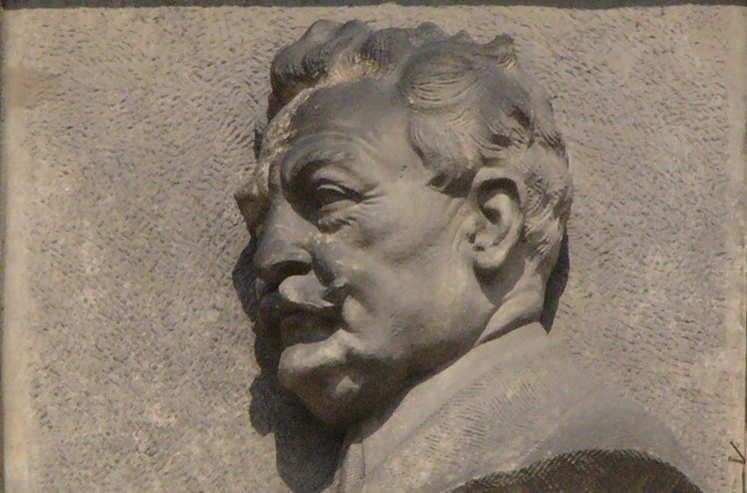The survival of baroque music into the 21st century is in some ways miraculous. A system of music built around a complex set of rules and assumptions, designed for a society in which political and religious hierarchy were both pervasive and unquestioned, seems inherently at odds with our noisy, free-for-all culture.
Yet, survive it does, and, indeed, thrives within the classical music community, as last week’s concerts by the Dallas Bach Society and the Dallas Symphony Orchestra attest. Guest conductor Ottavio Dantone, whose career is built almost entirely on his role as a specialist on 17th and 18th century music, led the DSO in four performances at the Morton H. Meyerson Symphony Center last weekend.
The DSO departs from its usual concentration on music from the 19th and 20th centuries—the natural territory of the modern orchestra—about once a year. Last weekend, the DSO kept with the standard culling practice that is required when a contemporary orchestra takes on this particular era of classical music. The ensemble was reduced to about two dozen players, adding a harpsichord, small organ, and theorbo (a large, plucked string instrument) for the occasion.
That conductor Dantone knows this material intimately was obvious from the subtle grandeur of the opening chords of Corelli’s Concerto Grosso in D Major. The small entourage of strings resonated clearly in a hall designed for performances that often feature many more instruments.
The concert flowed crescendo-like fashion, from the more intimate, less well-known works of Corelli, Gregori, and Geminiani, before a concerto each by Vivaldi and Handel. It was then that more musicians were added for the grand and familiar Water Music, as well as Music for the Royal Fireworks, both by Handel.
If there is a single suggestion to be made, it’s merely that a little more variety of texture and genre would help to draw more attention to the program. An aria, a cantata, or even a solo concerto in the first half could have possibly served as an accessible boost to the proceedings. Still, it is admittedly all too easy to notice that Vivaldi and Handel are still universally known and admired, while their competent contemporaries are largely forgotten. That’s simply the difference between craft and art.
* * * *
The unofficial local baroque fest continued on Saturday evening at the Episcopal Church of the Incarnation, when the Dallas Bach Society presented one of the monuments of European culture, St. Matthew Passion, a musical reflection on the final days leading up to the trial and crucifixion of Jesus. The physical approach is an authentically different one from the Dallas Symphony, which relies on modern instruments. The Bach Society uses instruments specifically designed and built to replicate the instruments of the eighteenth century. Perhaps a good analogy would be the difference in construction materials used in a residential building circa 1814, as opposed to 2014.
Bach’s three-hour oratorio resounded splendidly in the reverberant church sanctuary, with Bach Society director James Richman leading at the harpsichord. The composer’s mastery of orchestral color, counterpoint, and musical architecture shone through every moment of this epochal rumination on death. Though the theme is deeply attached to the Lutheran pietism of Bach’s time, it is one that transcends denomination or differences of philosophy. Bass David Grogan, a member of the music faculty at the University of Texas at Arlington, provided a particularly fine rendition of the central role of Christus.
* * * * *
While the DSO and the Dallas Bach Society focused on music from several centuries ago, the Soundings: New Music at the Nasher series drew on the less distant past on Friday night. This series, under the direction of pianist Seth Knopp, has consistently enlivened the local scene with innovative programs and a strong sense of social awareness.
Leos Janáček’s song cycle and quasi-chamber opera, 1921’s The Diary of One Who Disappeared, was based on a successful scam by a Czech journalist, who claimed to have “discovered” a set of poems by a young man who had been seduced and lured from home by a gypsy woman. However, the young man never actually existed.
The composition features piano, tenor, smaller passages of mezzo-soprano, and a trio of female vocals. In Janáček’s setting, the poetry takes on the mantle of profundity—packing marginalization, prejudice, alienation, and sex into slightly more than half an hour. It’s masterful, unique music straddling between late romanticism and modernism. Tenor Benjamin Butterfield and pianist Arthur Rowe performed this exquisite and complex score with unfailing insight and expertise.
The remainder of the concert was devoted to Merima Ključo’s Sarajevo Haggadah for piano and accordion. The combined effect of the music with visual projections provided the sort of cultural commentary and modern composition for which the Soundings series has come to be known.
Image: A relief of Leos Janáček found in Olomouc, Czech Republic. April 2006. Credit: Michael Mañas. Via.





